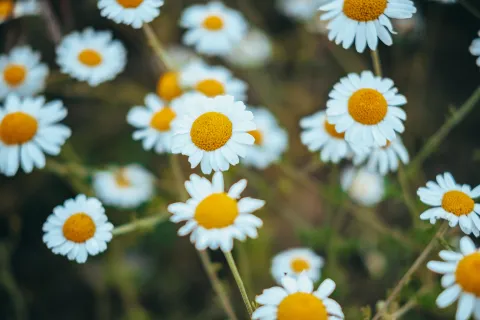
Scientific Name
Matricaria recutita
General Information
Chamomile, also called German chamomile, is a self-seeding annual that grows 2 feet tall. It has fragrant foliage and attractive flowers that attract bees, butterflies, and other beneficial insects. The flowers have a pineapple flavor and are often used to make tea. Do not confuse this plant with Roman chamomile (Chamaemelum nobile).
When to Plant
Sow seeds in early spring when temperature is above 55 degrees. Transplant when plants are under 1 to 2 inches tall.
Planting
Plant in full sun.
Soil Requirements
Prefers slightly alkaline, well-drained soil.
Water Requirements
Looks best with regular water but will grow with low water. It is shallow rooted so be sure to water enough to keep top layer of soil moist but not wet.
Fertilizing
Not necessary, especially in times of drought.
Pollination
German chamomile is pollinated by bees and flies
Harvesting
German chamomile often flowers 2 to 3 times in a year. Pick only fully developed flowers because they have the highest essential oil content. May be used fresh or dried.
Storage
Store dried flowers in a glass jar out of sunlight and use until next season’s harvest.
Good Varieties for Marin
German Chamomile is most commonly available. While other varieties have been developed for commercial production of the essential oil, the seeds are rarely sold.
Helpful Tips
In order to achieve enough flower production, be sure to plant enough plants. It is pleasing integrated in a bed with other ornamentals and herbs. Chamomile self-sows freely, so be sure to dead head if you don’t want new plants next season.
Common Problems
No significant problems; easy to grow.
Pests- Diseases & More
German chamomile has few problems other than aphids. Wash them off with a spray of water.

